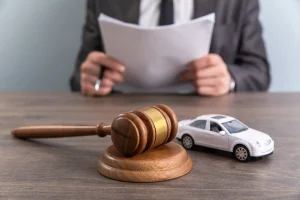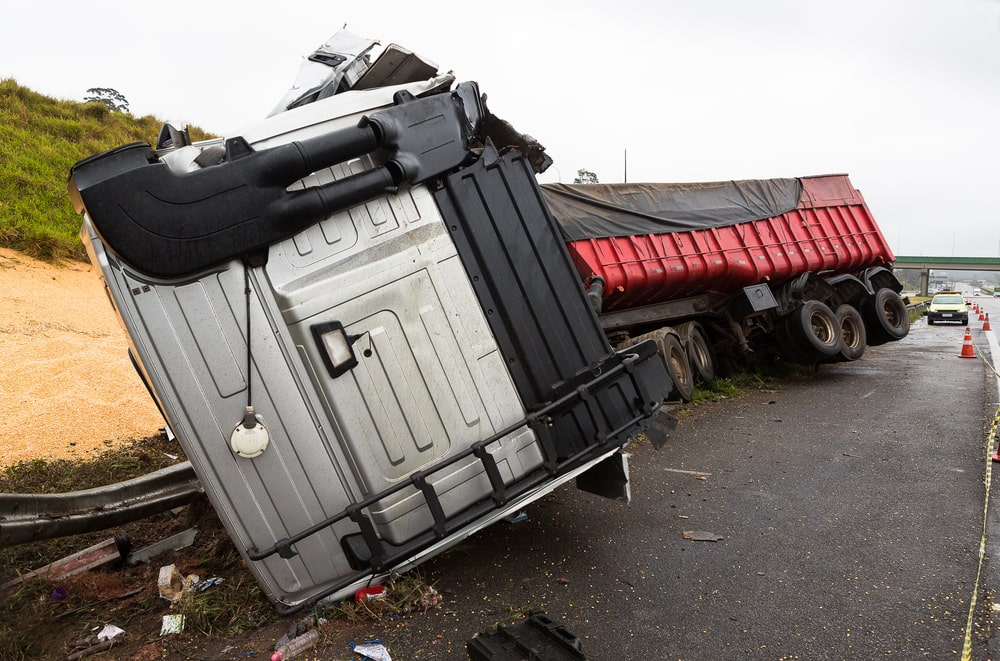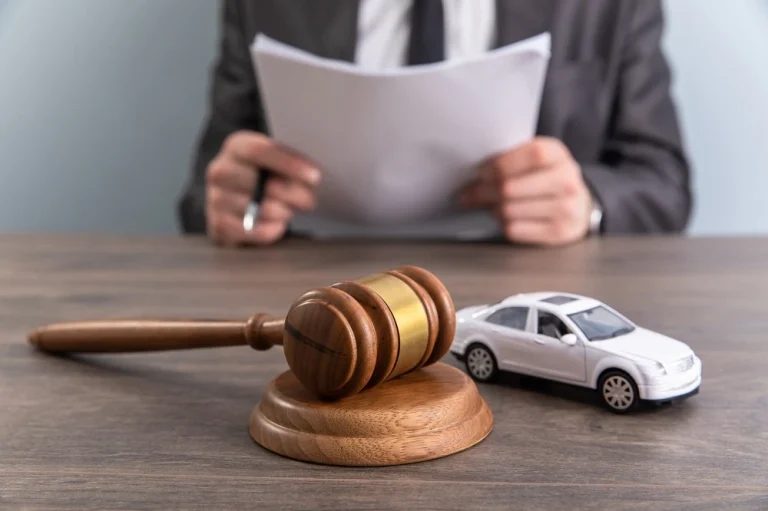Truck crashes on Houston’s busy corridors can upend lives in seconds, leaving injured drivers to navigate medical care, mounting expenses, and complex insurance questions. Understanding how a claim unfolds—and which facts actually move the needle—is the first step to regaining control. The legal landscape blends federal trucking rules with Texas negligence law, so timing and evidence collection matter as much as the narrative of the crash itself. Whether your collision involved a fatigued driver, a brake failure, or a multi-vehicle pileup, the right strategy starts with a clear plan and disciplined documentation. For many, discussing next steps with a Truck Accident Lawyer Houston or consulting the experienced team at Omar Ochoa Law Firm offers clarity and momentum when it’s needed most.
Common Causes of Truck Accidents on Houston Highways in 2025
Houston’s logistics surge continues into 2025, with freight traffic on I-10, I-45, US-59, and the Beltway pushing infrastructure and drivers to their limits. The most frequent causes still trace back to human and mechanical factors: fatigue from aggressive delivery schedules, distraction from in-cab tech, and inadequate following distances in dense traffic. Equipment failures—worn brakes, underinflated tires, and malfunctioning lights—compound risk, especially when rigs navigate tight urban interchanges or weather swings. Oilfield and port-related hauls amplify exposure by adding oversized loads, shifting cargo, and hazardous materials to already congested corridors. A Truck Accident Lawyer Houston will recognize early indicators—like off-schedule fuel receipts or gaps in electronic logs—that signal preventable conditions behind the crash.
Patterns behind preventable crashes
Emerging data in 2025 highlights how telematics, driver-assist systems, and electronic logging devices reduce risk only when companies maintain them and enforce compliance. When dispatchers push unrealistic windows, drivers may speed, skip break periods, or ignore alerts from fatigued driving monitors. Blind spot incidents remain common around merges and exits, particularly when trailers lack well-positioned mirrors or underride guards. Work zones add another layer of complexity, as lane shifts and uneven surfaces punish trucks with marginal maintenance or over-the-road loads. While drivers must adapt to conditions, liability often turns on whether a carrier prioritized safety over speed—and a Truck Accident Lawyer Houston can tie operational choices to the specific errors that caused the wreck.
Determining Liability Among Trucking Companies, Drivers, and Insurers
Liability in a Houston truck crash rarely rests on a single party; it often spans drivers, motor carriers, maintenance vendors, freight brokers, and even shippers who dictated loading practices. Texas law allows recovery from any entity whose negligence contributed to the harm, and the investigative path tests each link: hiring, training, supervision, dispatching, equipment upkeep, and post-crash handling. When carriers label drivers as “independent contractors,” courts still examine the right of control, safety procedures, and branding to assess vicarious liability. Freight brokers and shippers can face scrutiny if they knowingly chose unsafe carriers or imposed schedules that encouraged violations. The insurer’s role complicates matters further, particularly when layered coverage, self-insured retentions, or MCS-90 endorsements come into play, and that’s where the case-building experience at Omar Ochoa Law Firm proves decisive.
Untangling overlapping fault
Texas applies proportionate responsibility, meaning a jury may assign percentages of fault among all involved. If an injured driver is found 51% or more responsible, recovery is barred; below that threshold, damages are reduced by the plaintiff’s share of fault. Clear apportionment demands meticulous evidence—driver logs, dispatch notes, maintenance histories, and statements capturing decisions made in the minutes or months before the crash. Coordinating these sources against timeline analysis often reveals systemic issues, such as chronic understaffing of mechanics or repeated route changes that pushed a driver past safe limits. A seasoned Truck Accident Lawyer Houston synthesizes these threads, building a coherent theory of liability that accurately reflects how company policies and on-the-ground decisions combined to cause the collision, while the Omar Ochoa Law Firm team ensures insurers cannot minimize or obscure those facts.
Federal and Texas Safety Regulations That Affect Case Outcomes
Federal Motor Carrier Safety Regulations set the baseline: hours-of-service limits, drug and alcohol testing, driver qualification files, pre-trip inspections, and maintenance documentation. Carriers must also comply with weight, cargo securement, and hazmat rules, as well as keep updated records that auditors—and later, courts—can review. Texas layers on statutes covering mobile device use, speed restrictions in work zones, and intrastate hours that sometimes differ from federal standards. Violations of these rules can support negligence per se, allowing a court to treat certain breaches as automatic evidence of negligence when they cause the harm at issue. In practice, the interplay of federal and state oversight can tilt the case: an unfit driver on the road because screening fell short is very different from a rare, unavoidable equipment failure.
Rules that often tip a case
Certain regulations have outsized influence during litigation. Hours-of-service violations trace fatigue, especially when ELDs reveal patterns of log edits or suspicious off-duty intervals. Maintenance rules, particularly around braking systems and tire integrity, tend to be decisive because they connect directly to stopping distances and stability in emergency maneuvers. Drug and alcohol testing lapses undermine credibility and can open the door to punitive damages when companies demonstrate indifference to known risks. And when carriers argue preemption or industry custom, Texas courts still center on whether reasonable care was exercised; if evidence shows the company valued speed or savings over safety, jurors often respond accordingly, which is why careful regulatory analysis matters as much as eyewitness testimony.
Key Evidence: Driver Logs, Black Box Data, and Maintenance Records
In the immediate aftermath of a truck crash, the most powerful story comes from data. Electronic logging devices document hours driven, rest periods, and sometimes vehicle power cycles that hint at log manipulation. The engine control module and other “black box” systems capture speed, throttle position, braking, and fault codes in the seconds before impact. Telemetry from fleet management platforms can map route choices, abrupt accelerations, and idling patterns, while cellphone records corroborate or refute distraction. Maintenance files—work orders, parts receipts, inspection checklists—show whether critical systems were serviced on schedule or allowed to degrade in violation of safety protocols.
Securing and interpreting digital proof
Preserving this evidence requires rapid action, because companies may overwrite digital data during routine operations. Attorneys send spoliation letters to lock down ELD archives, ECM snapshots, dashcam footage, and dispatch communications, and then seek court orders if resistance arises. Once secured, experts analyze timestamps, radar inputs, and brake application traces to reconstruct the crash with precision, matching physical damage to digital footprints. Cross-referencing maintenance notes with component failures often reveals recurring issues—like repeated low air pressure warnings—that a prudent carrier should have addressed. While eyewitness accounts add context, the data-driven chain of proof is what often persuades adjusters and juries, particularly when it shows a preventable event unfolding in real time rather than a sudden, unforeseeable emergency.
How Attorneys Help Victims Document Medical and Financial Losses
Proving damages is more than tallying bills; it’s about demonstrating how injuries have changed a person’s life and earning capacity. Early coordination with treating physicians secures accurate diagnoses, causation opinions, and treatment plans that align with accepted guidelines. When care spans months, attorneys track progress notes, imaging, and therapy records to avoid gaps insurers might exploit as evidence of noncompliance. For complex injuries—spinal trauma, brain injuries, or multiple fractures—life care planners outline future medical needs, from specialist visits and medications to adaptive equipment and home modifications. This cohesive medical narrative reduces disputes and strengthens a settlement demand that reflects the full arc of recovery.
Building a complete damages picture
Financial losses require equal rigor. Pay records, tax returns, and supervisor statements substantiate lost wages, while vocational experts evaluate how restrictions affect long-term earning potential for skilled trades, drivers, or office workers. For self-employed victims, profit-and-loss statements, client contracts, and booking histories can reveal seasonality and trajectory that raw bank deposits miss. Pain, suffering, and loss of enjoyment are documented through detailed journals, family statements, and functional assessments that capture the day-to-day impact of chronic pain or limited mobility. Because insurers often undervalue non-economic losses, a Truck Accident Lawyer Houston crafts a claim package that combines hard numbers with credible human proof, ensuring negotiations don’t reduce a lived experience to line items on a spreadsheet.
Why Prompt Legal Action Preserves Evidence and Increases Recovery
Time is a strategic factor in truck cases. Vehicle control modules can cycle, dashcam systems overwrite, and carriers rotate equipment through shops where parts get replaced without retaining the originals. Roadway conditions change quickly as skid marks fade and debris is cleared, and witnesses become harder to locate or less confident in their recollections. Acting immediately allows an attorney to inspect the truck, document the scene, and issue preservation demands before crucial proof disappears. Early medical documentation also bolsters causation by connecting symptoms to the crash rather than later life events.
The compounding value of early moves
Texas law imposes deadlines for filing claims, but waiting even a few weeks can erode leverage long before the statute of limitations becomes an issue. Prompt action enables experts to capture high-fidelity data, from ECM downloads to photogrammetry of vehicle crush patterns, and to interview key witnesses under fresh memory. It can also uncover additional coverage—like umbrella policies, broker indemnities, or multi-tier carrier insurance—that might be missed after records go cold. By moving quickly, attorneys frame the narrative while evidence is strongest, reducing opportunities for insurers to deny or distort. If you’re unsure where to start, contacting a respected team such as Omar Ochoa Law Firm can align investigation, medical support, and negotiation early, preserving your rights and positioning your claim for a fair, well-documented recovery.








